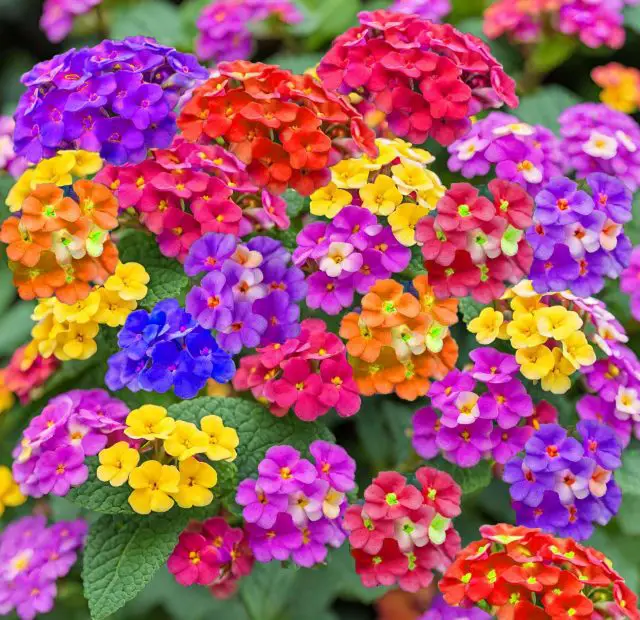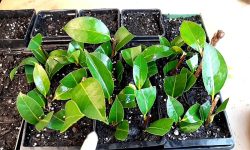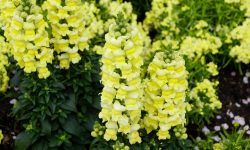Lantana is one of those rare garden plants that captivates with vibrant blooms, attracts pollinators, and keeps flowering for months on end. But if you’re wondering, Is lantana a perennial?, the answer depends on where you live—and understanding this can help you make the most of its colorful potential.
In this complete growing guide, you’ll learn whether lantana behaves as a perennial in your climate, how to grow and care for it for continuous blooming, and the best ways to protect it from cold weather. Whether you’re planting it in beds, hanging baskets, or containers, this guide will help you enjoy lantana’s tropical flair season after season.
Understanding Lantana: Perennial or Annual?

Lantana can be either a perennial or an annual, depending entirely on your local climate. In USDA Hardiness Zones 9 through 11—regions with mild winters and rare frost—lantana grows as a true perennial. It survives year after year, blooming continuously from late spring through fall and even into early winter in warm climates. In these zones, lantana forms woody stems and can grow into large, shrub-like mounds or trailing groundcovers, making it a permanent fixture in the landscape.
However, in colder regions—Zones 8 and below—lantana is typically grown as an annual. Once frost arrives, the plant dies back completely and won’t return the following spring unless it’s brought indoors or specially protected. Even a light freeze can kill the plant to the roots. That’s why many gardeners in cooler areas replant lantana each year or grow it in containers that can be moved indoors during winter.
There are also two main types of lantana to consider: Lantana camara, which is often treated as a perennial in warm climates and is the most common ornamental species, and Lantana montevidensis, a trailing variety that also thrives as a perennial in frost-free areas. Understanding which type you’re growing and your local weather patterns will determine whether your lantana acts like a dependable perennial or a seasonal splash of color.
In short, lantana is a perennial in warm zones and an annual in cold zones—but with the right care, it can provide lasting beauty no matter where you garden.
How Climate Determines Lantana’s Lifespan
Climate plays a key role in how long lantana lives and thrives in your garden. In warm, frost-free climates—especially USDA Zones 9 to 11—lantana behaves as a true perennial. It can live for many years, blooming from spring through fall and even into winter. These plants often go semi-dormant in cooler months but regrow vigorously each spring without needing replanting.
In contrast, in regions with cold winters (Zones 8 and below), lantana usually cannot survive temperatures below 28°F (-2°C). In these areas, lantana is grown as an annual unless overwintered indoors. Gardeners often replant it each year or treat it as a container plant that’s moved indoors during the cold season.
Humidity and rainfall also affect its longevity. Lantana prefers well-drained soil and tolerates drought, but prolonged soggy conditions in humid climates can shorten its life by causing root rot or fungal issues. Matching your lantana care to local weather—especially winter temperatures—determines whether it’s a temporary bloom or a long-lasting garden favorite.
Choosing the Right Lantana Variety for Your Region
Selecting the right lantana variety for your specific region is essential to ensure healthy growth, continuous blooming, and long-term success. Different types of lantana vary in their cold tolerance, size, growth habit, and flowering intensity. Gardeners in warmer climates like USDA Zones 9–11 can confidently choose spreading, shrubby varieties such as Lantana camara, which grow vigorously and bloom prolifically year after year. These types are ideal for large garden beds, erosion control, or attracting pollinators like butterflies and hummingbirds.
In cooler regions where lantana is grown as an annual, compact or trailing varieties like ‘Bandana’, ‘New Gold’, or ‘Patriot’ are more suitable. These cultivars are bred for shorter growing seasons, fast bloom production, and manageable size in containers or borders. Their vibrant blooms offer a burst of color throughout the summer and early fall before frost sets in.
Some modern hybrids are specifically designed to resist disease and tolerate varying soil and humidity conditions, making them great for humid Southeast gardens or dry Southwestern landscapes. When choosing a variety, always consider not just the cold-hardiness zone, but also your garden’s sun exposure, soil type, and whether you prefer upright bushes or cascading forms. This thoughtful selection will help you enjoy healthy lantana plants with long-lasting color season after season.
Ideal Soil and Sunlight Conditions
Lantana thrives best in conditions that mimic its native tropical and subtropical environment—warm, sunny, and well-drained. Full sun is crucial for abundant flowering. Aim to plant your lantana in a location that receives at least six to eight hours of direct sunlight daily. In shadier spots, lantana may grow leggy and produce fewer blooms, reducing its ornamental appeal.
As for soil, lantana is highly adaptable but performs best in loose, slightly acidic to neutral soil with good drainage. Sandy or loamy soils are ideal, as they prevent water from pooling around the roots, which can cause rot. While lantana tolerates poor soil better than many other plants, it will flower more vigorously when planted in soil that is moderately fertile. If your garden soil is heavy clay, amend it with organic compost or coarse sand to improve aeration and drainage.
Avoid overly rich soil or high-nitrogen fertilizers, which can promote excessive leafy growth at the expense of blooms. Once established, lantana is drought-tolerant, but consistent moisture during the growing season—especially in containers—will help the plant maintain continuous, colorful flowering. By providing the right balance of sunlight and soil conditions, you’ll create an environment where lantana can truly thrive and deliver months of vibrant color.
Planting and Spacing for Optimal Growth
To give lantana the best start, plant it after the danger of frost has passed and the soil has warmed—usually in mid to late spring depending on your region. Start by loosening the soil about 8–10 inches deep to help roots establish easily. Dig a hole twice as wide as the root ball and set the plant at the same depth it was growing in its nursery container. Gently backfill and press the soil to eliminate air pockets, then water thoroughly.
Proper spacing is essential to prevent overcrowding and promote healthy air circulation, which reduces the risk of mildew or fungal diseases. For low-growing, mounding varieties, allow at least 12 to 18 inches between plants. For taller or trailing types—especially those used in landscape borders or large beds—space them 24 to 36 inches apart to accommodate their mature spread.
In containers or hanging baskets, use a high-quality, well-draining potting mix and ensure that the container has good drainage holes. While you can plant more densely in pots, be sure to monitor moisture levels more frequently, as confined roots dry out faster.
Good spacing not only enhances air flow and disease resistance but also allows each lantana plant the room it needs to flourish—resulting in a fuller, more colorful garden display that lasts from spring through fall.
Watering and Feeding for Perennial Performance
Pruning Techniques to Encourage Blooming
Overwintering Lantana in Cold Climates
In regions where winter temperatures fall below freezing, lantana cannot survive outdoors year-round. To protect your plants and help them return next season, you’ll need to overwinter them indoors.
Before the first hard frost, dig up your lantana if it’s planted in the ground. Gently shake off excess soil and place the root ball into a container with well-draining potting mix. Trim back the plant by about one-third to reduce stress and make it easier to manage indoors.
Place the pot in a cool, bright location such as a sunroom, enclosed porch, or near a south-facing window. Lantana needs some light during dormancy but can tolerate lower temperatures—ideally between 50–60°F (10–15°C). Water sparingly during this time, just enough to keep the soil barely moist. Overwatering can lead to root rot while the plant is semi-dormant.
If light is limited, lantana may drop its leaves indoors. This is normal. It will bounce back in spring with new growth. In early spring, prune lightly, increase watering gradually, and move the plant to a sunnier, warmer spot to wake it up before replanting outdoors after the last frost.
Overwintering lantana successfully allows gardeners in USDA zones below 8 to enjoy this vibrant bloomer year after year, even in cold climates.
Managing Pests and Diseases
Lantana is generally pest-resistant, but certain issues can arise, especially in warm, humid conditions or when grown indoors.
Common pests include aphids, whiteflies, and spider mites. These insects typically gather on the undersides of leaves, sucking plant sap and causing yellowing or curling. You can control light infestations with a strong blast of water or by wiping leaves with a damp cloth. For more persistent problems, use insecticidal soap or neem oil, applied every 7–10 days until pests are gone.
Mealybugs may appear as white cottony clusters, particularly in container-grown lantana. Remove them manually or treat with rubbing alcohol on a cotton swab. Regular inspections can help prevent larger infestations.
Fungal diseases like powdery mildew or root rot can affect lantana in poor air circulation or soggy soil. To prevent this, space plants properly, water only at the base, and avoid overhead irrigation. Ensure containers have good drainage and never let the soil stay waterlogged.
By addressing pests early and maintaining healthy growing conditions, you can keep your lantana vibrant, vigorous, and blooming throughout the season.
Propagating Lantana for More Perennial Plants
Lantana is easy to propagate, making it simple to expand your garden or share plants with others. The two most effective methods are stem cuttings and seed propagation.
Stem cuttings are the fastest and most reliable way to grow more lantana. In late spring or early summer, take 4–6 inch cuttings from healthy, non-flowering stems. Remove the lower leaves, dip the cut end in rooting hormone, and plant it in a moist, well-draining potting mix. Place the container in a warm, bright spot out of direct sun. Keep the soil slightly damp, and roots should form in about 3–4 weeks. Once rooted, transplant the new plants into the garden or larger pots.
Seed propagation is less common but still possible. After lantana blooms fade, they form small, berry-like fruits. Wait until they’re fully ripe and black before harvesting. Dry the seeds thoroughly before sowing indoors in early spring. Use a lightweight seed-starting mix, and keep the tray warm and slightly moist. Germination can take 4–6 weeks. Be aware that lantana grown from seed may not resemble the parent plant, especially if it’s a hybrid.
Propagation allows you to create more drought-tolerant, vibrant lantana plants that return each year in mild climates. It also ensures a steady supply of healthy new specimens for borders, containers, and pollinator gardens.
Maintaining Lantana Through the Seasons
Lantana care changes slightly with each season to ensure healthy, long-lasting plants and continuous color.
Spring is the time to clean up winter damage. Prune back dead or woody stems to encourage new shoots. Apply a balanced slow-release fertilizer to jumpstart growth. If you’re growing lantana in cooler zones, wait until the threat of frost has fully passed before moving plants outdoors or removing winter protection.
Summer is peak blooming season. Deadhead faded blooms regularly to promote more flowers. Monitor soil moisture, especially during hot spells—lantana prefers slightly dry conditions but will bloom more reliably with consistent, moderate watering. If the plants become leggy, a light mid-season trim can restore shape and increase branching.
Fall care involves preparing for cooler weather. In frost-free areas, you can continue enjoying lantana’s blooms well into autumn. In colder zones, reduce watering to help the plant harden off. Start transitioning container plants indoors before nighttime temperatures drop below 50°F (10°C). Stop fertilizing by early fall to allow plants to slow down naturally.
Winter care depends on your climate. In warm zones (USDA 9–11), lantana often stays evergreen. Light pruning may be done to shape the plant, but avoid heavy cuts. In colder zones, lantana either dies back to the ground or must be overwintered indoors. For outdoor plants, apply a thick mulch layer around the base to protect roots. Indoors, place potted lantana in a bright, cool location and water sparingly until spring.
By adjusting care with the seasons, you can keep lantana vibrant and thriving year after year, whether it grows as a perennial or is overwintered with care.
Benefits of Growing Lantana as a Perennial
Growing lantana as a perennial offers lasting rewards for gardeners in warmer climates or with proper overwintering methods. One major benefit is continuous color—lantana blooms for months, often from spring through fall, with minimal effort. Once established, it provides a reliable, long-term source of vibrant flowers that attract pollinators like butterflies, bees, and hummingbirds.
Lantana also offers low-maintenance beauty. Mature plants become drought-tolerant, resist deer, and require little fertilization. Their tough nature makes them perfect for hot, dry gardens, coastal areas, or poor soils. As perennials, they grow larger and fuller each year, creating dense ground cover, cascading mounds, or impressive containers with little need to replant.
Another key benefit is cost savings. Instead of buying new plants each season, you can enjoy the same lantana year after year with just basic seasonal care. For gardeners who love long-lasting, colorful, and resilient plants, lantana thrives as a perennial centerpiece.
FAQ: Frequently Asked Questions About Growing Lantana as a Perennial
Is lantana a true perennial in all climates?
Lantana is a true perennial only in USDA hardiness zones 9 through 11, where winter temperatures rarely drop below freezing. In these regions, lantana survives year-round, growing larger each season. In colder climates (zones 8 and below), it is grown as an annual or overwintered indoors because freezing temperatures will kill the plant to the roots.
How can I overwinter lantana to keep it as a perennial in colder zones?
If you live in a cold region, dig up your lantana before the first frost and place it in a pot. Trim it back by half, remove any pests, and bring it indoors to a sunny window or under grow lights. Water sparingly during winter dormancy. In spring, gradually reintroduce the plant to outdoor conditions before replanting after the last frost.
What’s the best time of year to prune lantana for better perennial growth?
Prune lantana in early spring, just as new growth begins to emerge. This removes dead or damaged wood and stimulates new flowering stems. Light shaping and deadheading can continue throughout the season to maintain a neat appearance and encourage more blooms. Avoid hard pruning in fall, especially in colder zones, as this can expose the plant to winter damage.
How often should I water and fertilize lantana for perennial performance?
Lantana needs regular watering during its first growing season to establish strong roots. Once established, water only when the soil is dry. Avoid overwatering, which can lead to root rot. Fertilize lightly in early spring with a balanced or low-nitrogen fertilizer. Too much nitrogen can reduce blooming and make the plant leggy. In rich soil, lantana often thrives with little to no fertilizer.
Can I propagate my perennial lantana at home?
Yes, lantana is easy to propagate from softwood cuttings in late spring or early summer. Cut a healthy stem, remove lower leaves, and dip the cut end in rooting hormone. Plant it in moist, well-drained potting mix and keep it in a warm, bright area. New roots typically form within a few weeks. You can also collect seeds, though they may not grow true to the parent plant. Propagating ensures a steady supply of plants for borders, containers, or to share.
Conclusion: Making Lantana a Lasting Part of Your Garden
Whether you live in a warm region where lantana thrives year-round or a cooler area where it’s treated as a tender perennial, this plant offers exceptional value and beauty. By choosing the right variety, providing optimal care, and adjusting for your local climate, you can enjoy lantana’s vibrant blooms for many seasons. With a bit of effort and knowledge, lantana can be more than a fleeting summer plant — it can become a reliable, colorful fixture in your landscape for years to come.






